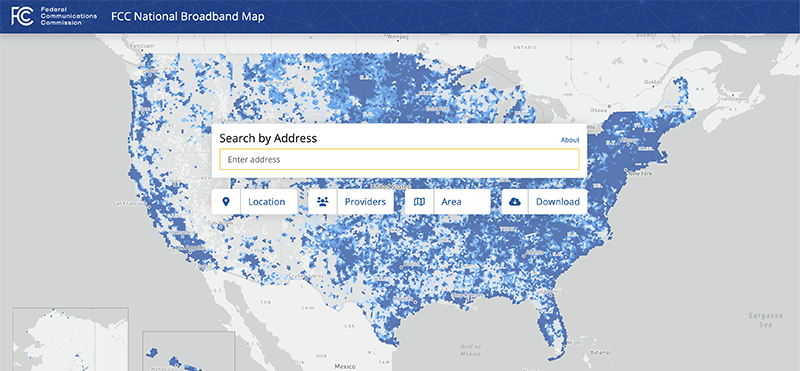We are now one step closer to closing America’s digital divide.
The Federal Communications Commission (FCC) just released an updated version of its national broadband map, providing a clearer picture of where high-speed internet service is – and is not – available.
Why it matters: The federal government will use this second iteration of the FCC broadband map to identify areas where investments are needed to connect all Americans to broadband.
Flashback: Following the release of its first draft of the broadband map in November 2022, the FCC reviewed millions of challenges involving potential inaccuracies and other feedback.
The updated map reflects these challenges and other improvements the FCC has made to its location and internet availability data.
FCC Broadband Map 2.0 – What’s Changed?
The new version of the FCC broadband map shows the following:
- A net increase of one million broadband serviceable locations, accounting for roughly two million removed and three million added to the map.
- That includes nearly 330,000 additional locations not served by high-speed broadband service.
Bottom line: Based on the updated version of the map, 8.3 million homes and businesses across the country do not have access to high-speed internet.
The Road to Connecting All of America
Using the most up-to-date version of the FCC broadband map as a guide, the federal government will soon decide how much funding each state will receive to connect the unconnected.
From there, closing the digital divide will ultimately be in the hands of each state – and their leaders.
That’s why Beyond has launched #ConnectivityCounts, a collective movement focused on ensuring that this once-in-a-lifetime federal broadband investment results in every American having access to high-speed internet.
We’re urging state leaders to:
- Prioritize the unconnected: Invest in projects that will bring broadband to communities without any connectivity while taking measures to avoid unnecessary waste, fraud, and abuse.
- Partner with experienced internet providers: Cable broadband providers have connected 82 million Americans to high-speed internet, including over 9 million in the last three years. States should leverage cable providers’ expertise, resources, and technology to get the job done right.
- Support broadband assistance programs: Internet assistance programs play a vital role in enabling millions of Americans to access broadband. These programs help subsidize the cost of broadband subscriptions, devices, and digital literacy training, allowing more people to participate in the digital world.
Join us and sign the petition to tell your state’s leaders to make smart broadband investments.
